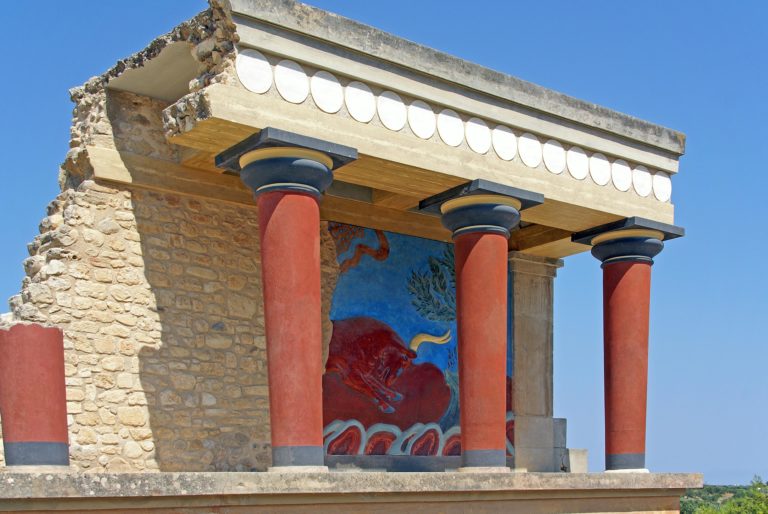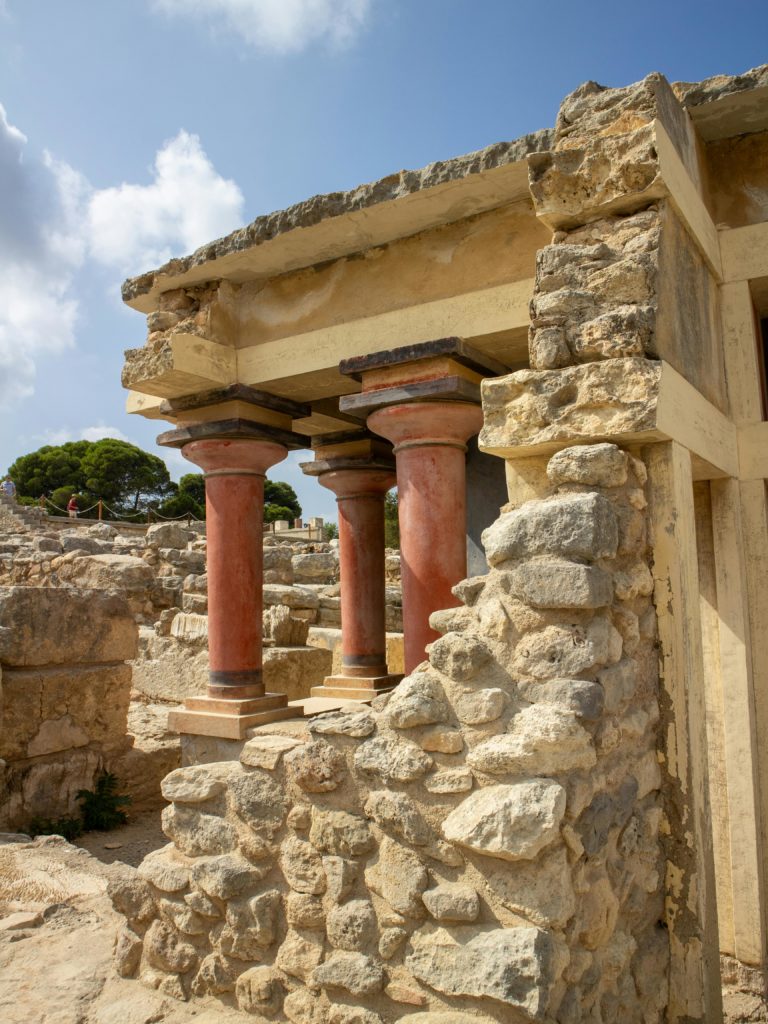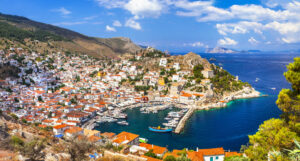
The Palace of Knossos: A Journey Through the Minoan Civilization
Perched on the island of Crete, near Heraklion, Knossos Palace is one of Greece’s most emblematic archaeological sites. Dating back to the Minoan civilization, this palace bears witness to the architectural ingenuity and cultural wealth of this ancient society. Every stone and every fresco tells a fascinating story, inviting visitors to plunge into a bygone world.
When was the Palace of Knossos built?
The Palace was built around 2000 BC and has undergone several reconstructions due to earthquakes and other natural disasters. The site served as an administrative and ceremonial center for the Minoans. It illustrates their power and sophistication.
Where is the Palace of Knossos located?
This archaeological site lies some five kilometers south of the modern city of Heraklion, on the fertile Messara plain. Moreover, this strategic location offered easy access to agricultural and maritime resources. These elements were essential to the prosperity of the Minoan civilization.
The characteristics of the Palace of Knossos
This impressive complex features hundreds of rooms spread over several levels, linked by labyrinthine corridors. Majestic reception halls and inner courtyards testify to the ingenuity of the Minoans. Sophisticated drainage systems illustrate their technological advance. Colorful frescoes depicting scenes of daily life and religious ceremonies add to the splendor of the site.

What made the Palace of Knossos an iconic site
The legend of King Minos and the Minotaur has contributed to the renown of Knossos Palace. This mythological creature, trapped in the labyrinth beneath the complex, fuels the fascinating tales associated with the site. In addition, the palace’s historical and archaeological significance reinforces its status. These elements combine to make it a powerful symbol of Minoan civilization.
Construction techniques
The Minoans employed advanced techniques to build their palaces. For example, they used stucco-covered wooden columns and stone walls. In addition, flat roofs and internal staircases illustrate their mastery of architecture. Innovations such as water pipes and sewers testify to their in-depth knowledge of infrastructure.
Tips for travelers
- Best time to visit : Spring and autumn are ideal for exploring the site. At these times of year, the climate is mild and there are fewer crowds.
- Guided tours: Taking part in a guided tour enriches the experience. It offers detailed explanations of the palace’s history and architecture.
- Nearby attractions: Consider combining your visit with that of the Heraklion Archaeological Museum. Many Knossos artifacts are on display, enriching your understanding of Minoan civilization.

The materials used
To build the palace, the Minoans chose quality materials. They made extensive use of limestone and gypsum, while wood was used for columns and internal structures. The artists created the frescoes using natural pigments applied to fresh plaster. This fresco technique produced vivid, long-lasting colors, adding a touch of splendor to the palace walls.
Local resources used
Taking advantage of the resources available on the island, the Minoans used cedar wood for the columns, ensuring solidity and aesthetics. Locally quarried stone was used to build the foundations and walls of the palace. In addition, the pigments for the frescoes came from local sources, contributing to the durability and beauty of the decorations.
How long did the Palace of Knossos remain intact?
Used for several centuries, the palace suffered extensive damage from natural disasters and invasions. As a result, it was finally abandoned around 1375 BC, marking a period of decline and destruction.
Current location of the remains of Knossos Palace
Today, the remains of Knossos Palace still stand on their original site near Heraklion. Partially restored by archaeologist Sir Arthur Evans in the early 20th century, the site allows visitors to better grasp its original grandeur. These restoration efforts offer valuable insights into Minoan architecture and culture.
Preservation of the Palace of Knossos
Today, Greek archaeological organizations protect the site. Ongoing efforts are aimed at preserving the remaining structures and frescoes. So visitors can discover this treasure trove of ancient history in the best possible conditions.
| | News | Products Greece | Greek Recipes | Our Producers and Artisans | Skiathos | Kefalonia | Hydra | Milos | Temple of Apollo | Paros | Olive Oil | Lesvos | Recipe for saganaki | Tarama | Recipe for Keftedes | Greek Yogurt | Recipe of Tarama | Rhodes | Thessaloniki | Figs | Greek Honey |




